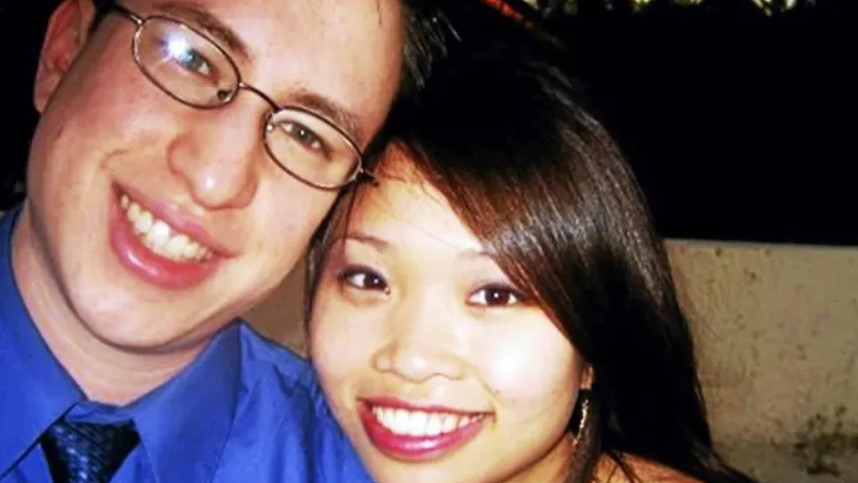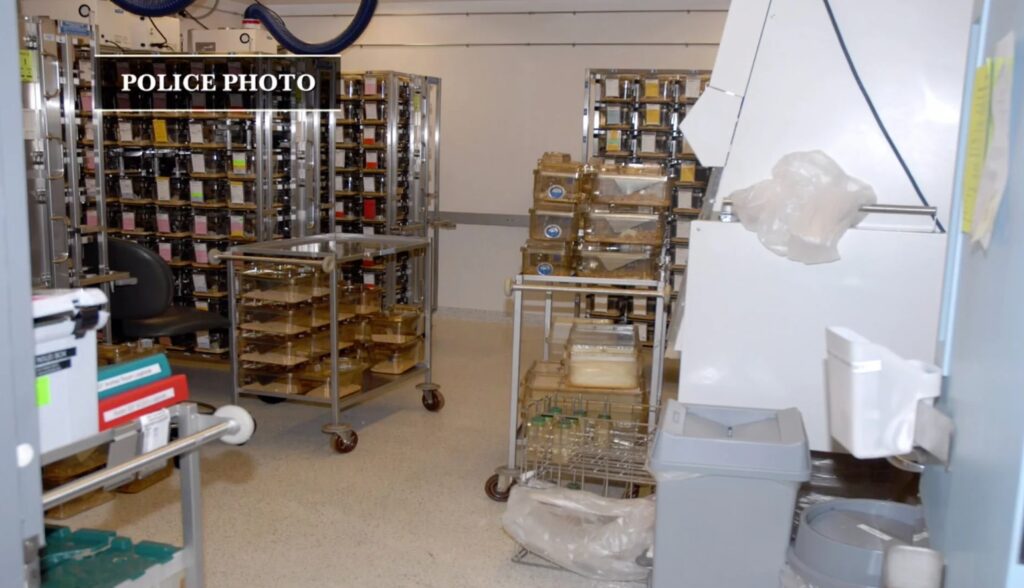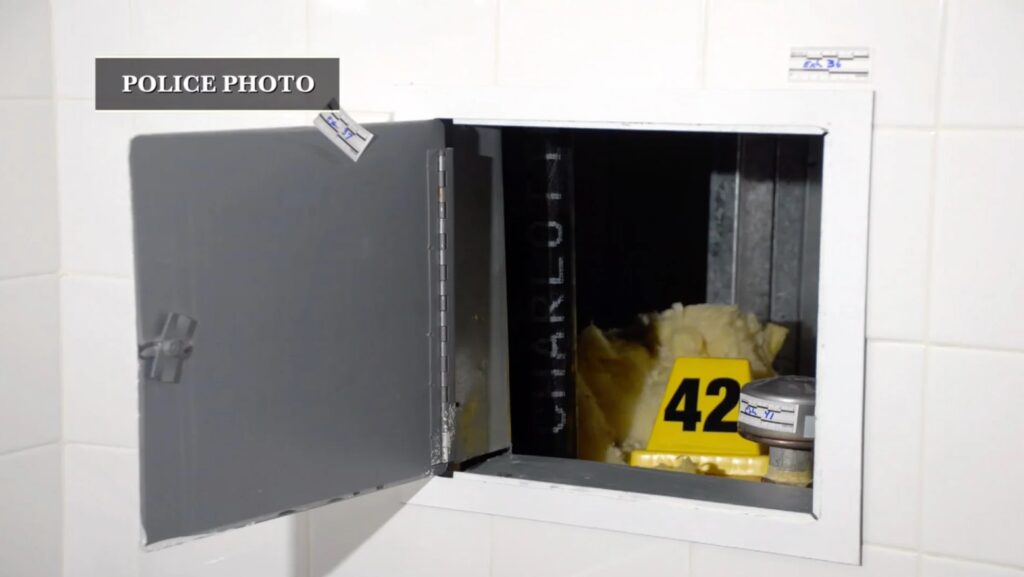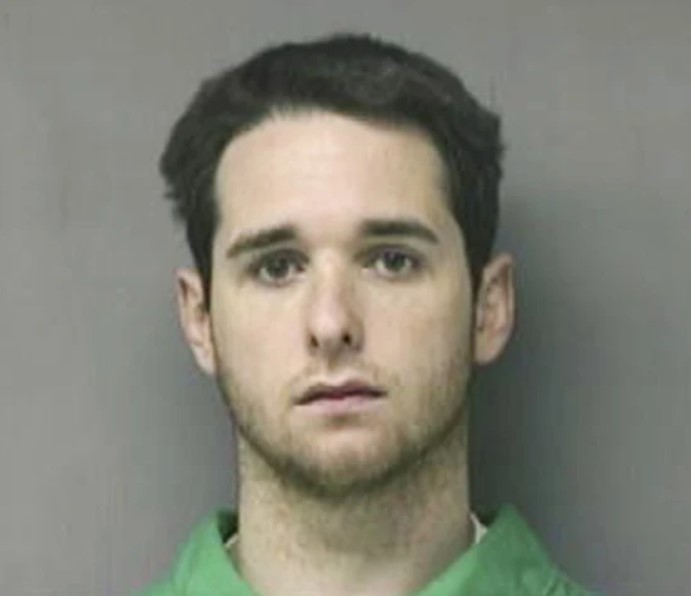A brilliant young grad student suddenly disappears from her research lab. What happened to Annie Le?
Episode Media






Episode Sources
- Murder of Annie Le – Wikipedia
- The Murder of Annie Le – Reddit
- The death of Annie Le
- Body Identified as Annie Le
- Cops recall suspicious behavior
- Yale mourns the loss of a gifted student and compassionate friend
- Raymond Clark III Arrest Warrant
- Raymond Clark Pleads Guilty to Murder of Yale Grad Student Annie Le
- Raymond Clark III on killing Yale grad student Annie Le: ‘I took a life and continued to lie about it’
- Yale lab tech gets 44 years for killing student
- New fellowships memorialize Annie Le, ‘an exemplary student’
- Why Was Yale Student Annie Le Murdered 5 Days Before Her Wedding?
- Lab Murder: The Brutal Slaying of Yale University Student Annie Le
Episode Transcript
Welcome back to Bite-Sized Crime. This week we’re looking into the case of a bright young grad student whose life was tragically cut short. This episode contains graphic descriptions, so listener discretion is advised.
Annie Marie Le was born in San Jose, California in 1985. The daughter of Vietnamese immigrants, Annie was surrounded by a loving family and encouraged in her academic pursuits. She was valedictorian of her graduating class in high school, and her fellow classmates voted her “Most Likely to be the Next Einstein.”
After graduating high school, Annie moved to Upstate New York where she got an undergraduate degree in cell developmental biology and medical anthropology at the University of Rochester.
But Annie wasn’t just smart and driven; she was kind and caring, and she was known for her joyful approach to life. At college, Annie met Jonathan Widawsky, who was studying physics and mathematics. Before long, the two had fallen in love and planned to get married.
In 2007, Jonathan was accepted into graduate school at Columbia University in New York City, while Annie chose to take her skills to Yale University in Connecticut, where she began to work towards a Ph.D. in pharmacology. Annie got an apartment in New Haven that she shared with five housemates, and she and Jonathan regularly made the nearly 2-hour commute to see each other.
At Yale, Annie was in her element. She worked diligently in the labs, part of a team that was researching enzymes in mice that they hoped could be applied to treatments for cancer, diabetes, and muscular dystrophy.
By 2009, the 24-year-old was excelling professionally. She had won a prestigious fellowship from the National Science Foundation, and she’d had articles published in Yale Medical School’s B Magazine, including one titled “Crime and Safety in New Haven”.
Her personal life was also going swimmingly. Annie and Jonathan had set a wedding date; they would be getting married on September 13th in the beautiful hamlet of Syosset on Long Island.
But just five days before the wedding, Annie Le vanished.
On the evening of Tuesday, September 8th, Annie’s housemates noticed that she hadn’t yet returned home from work. She had left at her usual time that morning, catching the campus shuttle from their apartment on Lawrence Street and heading towards her office in the Sterling Hall of Medicine. But as the work day ended and night began to fall, Annie’s housemates grew more and more concerned. She hadn’t mentioned that she would be working late, and now she wasn’t answering her office phone or her cell phone. Finally, around 9PM, they called the Yale Police Department and reported Annie missing.
At first, investigators wondered if this was just a case of a runaway bride. Had Annie gotten cold feet in the week before her wedding? But as they got to work piecing together a timeline of her movements that day, they quickly realized that there was more to the story.
Security cameras on campus showed that Annie had left her office around 10AM and walked the two short blocks to the research lab across from Amistad Park. A few minutes later, she was caught on camera as she entered the building, carrying some sort of bundle or package in her arms. Annie had left her purse and cell phone at her office, suggesting that she had only intended to be gone for a short while, perhaps to drop off whatever it was she was carrying. But investigators watched the video footage carefully, and Annie was never seen leaving the lab.
Police immediately closed off the entire building. Whatever had happened to Annie, it had happened there.
Annie’s family and her fiance Jonathan cooperated with investigators over the next few days as multiple law enforcement agencies conducted a campus-wide search. Federal agents joined the New Haven Police Department and the Connecticut State Police in searching the research labs and offices, as well as locations such as the landfill in Hartford, where all of the university’s trash is taken to be incinerated.
Two days into the search, one of Annie’s co-workers approached Yale Police Officer Sabrina Wood and told her that she had seen a box of cleaning wipes that appeared to be spattered with blood. The box was sitting on a metal cart in one of the lab rooms that Annie frequently worked in – Lab G13. Officer Wood immediately called for FBI agents to join her at the scene.
While she waited for them to arrive, Officer Wood observed one of the lab technicians come into the room, walk over to the cart, and move the box of wipes around, turning it so that the blood spatter was facing away. He then leaned against the cart and began making small talk with her. Later that day, Wood noticed the same technician return to Lab G13 and start scrubbing a drain that – in her opinion – seemed to be pretty clean already.
Oddly enough, Wood wasn’t the only investigator to have an encounter with that particular lab tech. According to a police affidavit, that same day, the man approached Yale Police Officer Jennifer Garcia, saying that he had seen Annie working in the lab around 10:30 on the morning she disappeared. He also said that he saw her leaving the building at 12:30, even though investigators had determined that she hadn’t left at all.
Detectives learned that the man’s name was Raymond Clark. He had been hired to take care of the animals in several of the laboratories, including the one where Annie worked. When questioned, Raymond told the FBI that he had known Annie for a few months, but they didn’t socialize outside of work. He also told them that the scratches on his face and arm had come from a cat.
Although investigators found Raymond Clark to be suspicious, suspicion wasn’t enough. They needed evidence, and they needed to find Annie.
Thankfully, the evidence wasn’t far away. During their search of the building, investigators found spray patterns on the walls of several lab rooms – G13 and G22 – that appeared to have been recently cleaned. They also found an extra-large lab coat with dark red stains in a recycling bin. DNA testing revealed a match – blood on the lab coat and on the box of cleaning wipes belonged to Annie Le. There was other evidence as well – a rubber glove, white sock, and blue hospital scrubs found hidden in the ceiling of G13 – all stained with blood. And in a locker, a pair of work boots spattered with blood and labeled with the name “Ray C.”
On Sunday, September 13th, the day Annie and Jonathan were to be married, officers from the Connecticut State Police entered the research lab with a team of bloodhounds. The dogs quickly detected the scent of a decomposing body.
Within hours, investigators had uncovered the body of Annie Le. She had been stuffed into a wall shaft in Lab G22. Next to her body were a green ink pen, a stained lab coat, and a white sock that appeared to match the one found earlier in the search. An autopsy would reveal that Annie’s cause of death was strangulation.
The discovery of Annie’s body kicked the investigation into high gear. The lab in which she’d been found was used to house research animals. It was a high-security area that was only accessible with a magnetic keycard. The dean of the Yale School of Medicine told reporters that it would be “extremely difficult” for a non-employee to get into the basement lab.
Investigators quickly honed in on their top suspect – Raymond Clark. By tracking the use of his keycard, they were able to trace his movements on September 8th. In the weeks before Annie’s death, Raymond accessed Lab G13 once and Lab G22 three times. But on September 8th, he accessed G13 five times and G22 eleven times. In all, Raymond used his keycard in the building 55 times between 10:40AM and 3:45PM that day. If he had just been working through his daily assignments, he wouldn’t have come close to that number. But even if Raymond had just been extra busy, the fact remained that his was the only keycard used to access Lab G22 on September 8th.
Within days, investigators had obtained a warrant to collect DNA samples from Raymond Clark. Testing showed that the white socks had a mixture of Annie’s and Raymond’s DNA present. The green pen, blue scrubs, and Raymond’s work boots all tested positive for Annie’s blood.
On September 17, 2009, police arrested Raymond Clark for the murder of Annie Le. He was held on $3 million bail at a maximum-security prison in Connecticut.
On March 17, 2011, Raymond Clark pleaded guilty to felony murder and entered an Alford Plea for attempted sexual assault. At his sentencing, Annie’s family delivered emotional statements, describing their grief as wedding celebrations turned into funeral preparations.
Annie’s mother Vivian told the court, “She was about to start her life as a young bride. She told me many times how happy she was to start her family. I will never see her walking down the aisle. I will never hold my grandchildren. I will never see Annie’s dreams come true. I only see my Annie in my dreams.”
As the family spoke, Raymond Clark listened with tears in his eyes. But he did not offer an explanation, only an apology. “I take full responsibility for my actions. I alone am responsible for the death of Annie Le and causing tremendous pain to all who loved and cared about Annie. I am truly sorry I took Annie away from her friends, her family, and most of all, her fiance. I blame only myself and there are no excuses for what I have done. Annie was and will always be a wonderful person, by far a better person that I will ever be in my life. I’m sorry I lied. I’m sorry I ruined lives and I’m sorry for taking Annie Le’s life.”
Raymond Clark was sentenced to 44 years in prison for felony murder, and 20 years for attempted sexual assault, to be served concurrently. He will be eligible for release in 2053.
Annie Le was a brilliant young woman with her whole life ahead of her. Had she lived, she undoubtedly would have made incredible strides in both her personal life and professional career. But even in her short life, she left an indelible mark on those around her, and her light has continued to shine. In 2010, Yale University established a fellowship in her name to provide assistance to doctoral candidates “whose commitment to bettering the world around them and outstanding record and research exemplify the qualities represented in the life and career of Annie Le.”
